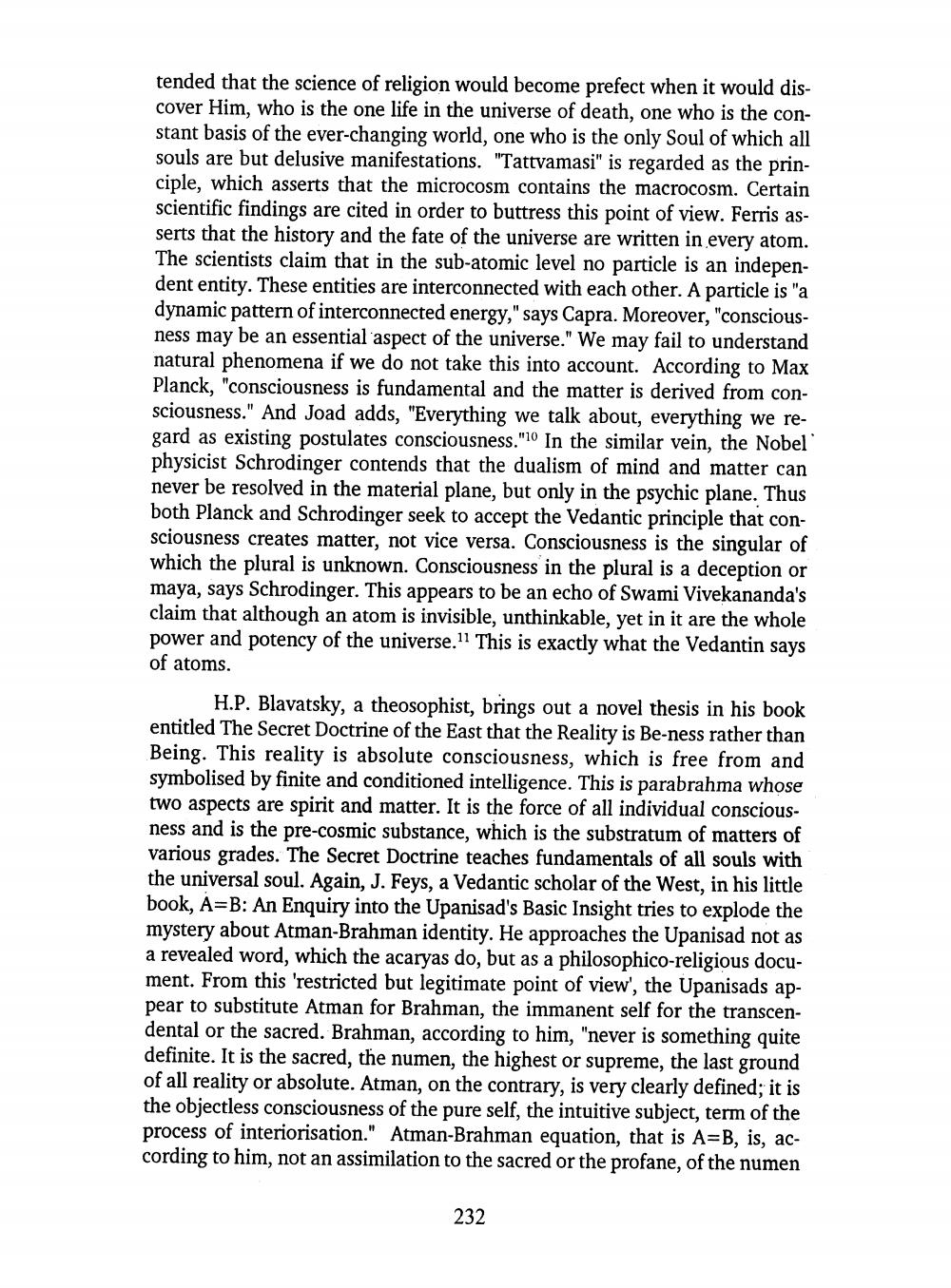________________
tended that the science of religion would become prefect when it would discover Him, who is the one life in the universe of death, one who is the constant basis of the ever-changing world, one who is the only Soul of which all souls are but delusive manifestations. "Tattvamasi" is regarded as the principle, which asserts that the microcosm contains the macrocosm. Certain scientific findings are cited in order to buttress this point of view. Ferris asserts that the history and the fate of the universe are written in every atom. The scientists claim that in the sub-atomic level no particle is an independent entity. These entities are interconnected with each other. A particle is "a dynamic pattern of interconnected energy," says Capra. Moreover, "consciousness may be an essential aspect of the universe." We may fail to understand natural phenomena if we do not take this into account. According to Max Planck, "consciousness is fundamental and the matter is derived from consciousness." And Joad adds, "Everything we talk about, everything we regard as existing postulates consciousness."10 In the similar vein, the Nobel physicist Schrodinger contends that the dualism of mind and matter can never be resolved in the material plane, but only in the psychic plane. Thus both Planck and Schrodinger seek to accept the Vedantic principle that consciousness creates matter, not vice versa. Consciousness is the singular of which the plural is unknown. Consciousness in the plural is a deception or maya, says Schrodinger. This appears to be an echo of Swami Vivekananda's claim that although an atom is invisible, unthinkable, yet in it are the whole power and potency of the universe. 11 This is exactly what the Vedantin says of atoms.
H.P. Blavatsky, a theosophist, brings out a novel thesis in his book entitled The Secret Doctrine of the East that the Reality is Be-ness rather than Being. This reality is absolute consciousness, which is free from and symbolised by finite and conditioned intelligence. This is parabrahma whose two aspects are spirit and matter. It is the force of all individual consciousness and is the pre-cosmic substance, which is the substratum of matters of various grades. The Secret Doctrine teaches fundamentals of all souls with the universal soul. Again, J. Feys, a Vedantic scholar of the West, in his little book, A=B: An Enquiry into the Upanisad's Basic Insight tries to explode the mystery about Atman-Brahman identity. He approaches the Upanisad not as a revealed word, which the acaryas do, but as a philosophico-religious document. From this 'restricted but legitimate point of view', the Upanisads appear to substitute Atman for Brahman, the immanent self for the transcendental or the sacred. Brahman, according to him, "never is something quite definite. It is the sacred, the numen, the highest or supreme, the last ground of all reality or absolute. Atman, on the contrary, is very clearly defined; it is the objectless consciousness of the pure self, the intuitive subject, term of the process of interiorisation." Atman-Brahman equation, that is A=B, is, according to him, not an assimilation to the sacred or the profane, of the numen
232




